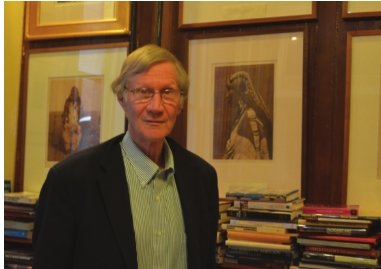
Without the handful of intrepid photographers who documented the Native Americans of North America at the turn of the last century, we would have little idea what their way of life looked like before they were forced to adopt the ways of colonizing Europeans. Doug Price, an Ann Arbor-based photograph collector and gallery owner, has built up an extensive collection of early Native American photography.
Price will exhibit and discuss photographs by several prominent photographers, including Edward Curtis, Frank A. Rinehart, Karl Moon and Michigan photographer Grace Chandler, 1 p.m. Saturday at the Library of Michigan. The presentation is part of the Historical Society of Greater Lansing’s ongoing exhibit on photography, “From Sepia to Selfies.”
Price, who graduated from MSU with a degree in history, said he got into photo collecting while he was working at Jocundry’s Books in East Lansing during the 1970s. A customer tipped him off to a cache of photographs by Curtis being sold at an Okemos rummage sale. He snatched them up, starting his career in the rare photography business. Price maintains a gallery at Westside Books in Ann Arbor.
Price said most of the early photographers of Native Americans were part of the pictorialist movement — taking the photographs to maximize the beauty of an image at the expense of realism.
“We have to remember that most of the photographers were taking photographs for a white audience,” he said. “But the photographers became very much aligned with their subjects.”
Curtis, probably the best known photographer of Native Americans, spent 30 years of his life lugging camera equipment to remote locations across the American west, documenting a way of life that had inexorably changed. Curtis took more than 40,000 photographs for his 20-volume “The North American Indian” series, which comprises over 2,500 images.
Chandler, a photographer in Petoskey and Harbor Springs from 1899 to 1923, had unparalleled access to the local Native American tribe members. Her most notable images are of the performers in the Petoskey Hiawatha Indian Pageant, which was each summer at Lake Ya-wa-ga-mu (Round Lake) from about 1905 to 1914.
The pageant, based on Henry Wadsworth Longfellow’s epic poem, was the brainchild of a railroad executive of the Grand Rapids and Indian Railways. He erected a stage for the pageant, complete with 2,500 grandstand seats, as a way of attracting tourists to the area. Ernest Hemingway, while still in high school, used the pageant as inspiration to write an unpublished play, “No Worse Than a Bad Cold.”
Chandler was influenced by Curtis, whom she visited in Washington state, as she created her visually stunning but highly stylized photographs. Price said the photographers were often taking photographs of a way of life that had already vanished.
“Our broader national experience of who Indians are has been influenced by these photographs,” Price said. “They provide a much different vision of who they are, contrasted to the movie industry depiction.”
James McClurken, Lansing ethnographer and author of “Our People, Our Journey: The Little River Band of Ottawa Indians,” has worked four decades with Native American tribes as a consultant on tribal recognition issues. When he was working with the Traverse City Band of Odawa Indians in the 1980s to get tribal recognition from the federal government, they created a book, “Gah-Baeh-Jhagwah-Buk: The Way It Happened — A Visual Culture History of the Little Traverse Bay Bands of Odawa,” containing photographs of tribe members.
“When they first began going to the Capitol, the congressmen didn’t even know there were Indians in Michigan,” McClurken said.
At a crucial committee meeting, Sen. John McCain, R-Ariz., responding to questions about the tribe’s legitimacy, held up the book.
“What do you mean there are no Indians there?” he asked. “They have a book.”
“The committee voted to support the tribal recognition. That is the power of images,” McClurken said.
Photographs of Michigan Native Americans are scarce, McClurken said. Family members hold onto the photos they have, often passing them down from generation to generation. In just one example of that scarcity, there are only two known photographs of Chief Okemos, namesake of the Meridian Township community.
Through the collecting process, Price has become an amateur ethnographer, researching each of the photographs he buys. He said most Native American photography took place west of the Mississippi, so photographs of Native Americans in the eastern part of the Midwest are much harder to come by.
“Anyone interested in photography and especially the photography of the Native American will want to take this opportunity to view these important images up close and personal along with a careful discussion of what they represent,” said Valerie Marvin, president of the Historical Society of Greater Lansing. “The program underlines the importance photographs play in our collective memory.”
Humanity in Photography of North American Indians
With Doug Price 1 p.m. Saturday, Dec. 12 FREE Library of Michigan 702 W. Kalamazoo St., Lansing (517) 282-0671, lansinghistory.org
Support City Pulse - Donate Today!
Comments
No comments on this item Please log in to comment by clicking here